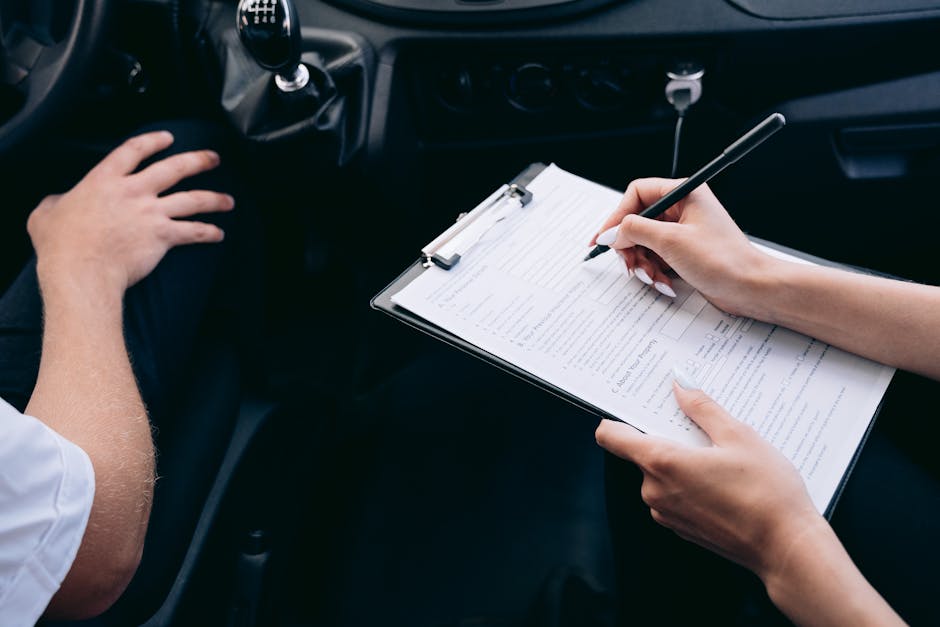A Comprehensive Guide on How to File a Car Insurance Claim
Car insurance is a crucial aspect of responsible vehicle ownership, providing financial protection in the event of accidents, theft, or damage. However, knowing how to file a car insurance claim can be intimidating and confusing for many individuals. Whether you’re a seasoned driver or a new car owner, understanding the process of filing a car insurance claim is essential to ensure a smooth and successful outcome. In this comprehensive guide, we will explore the ins and outs of filing a car insurance claim, from the initial steps to the final resolution. Let’s delve into the world of car insurance claims and unravel the mysteries surrounding this important aspect of vehicle ownership.
Understanding the Basics of Car Insurance Claims

Before diving into the specifics of how to file a car insurance claim, it’s important to have a basic understanding of how car insurance works. Car insurance is a contract between you and your insurance provider, where you pay a premium in exchange for coverage in the event of an accident, theft, or damage to your vehicle. When you file a car insurance claim, you are essentially asking your insurance company to honor the terms of your policy and provide financial compensation to repair or replace your vehicle.
The process of filing a car insurance claim can vary depending on your insurance provider, the type of coverage you have, and the circumstances of the incident. However, there are some general steps that are common to most car insurance claims. Let’s explore these steps in detail to understand how to file a car insurance claim effectively.
Step 1: Assess the Situation

The first step in filing a car insurance claim is to assess the situation and determine if it’s necessary to file a claim. If you’ve been involved in an accident, the first priority is to ensure the safety of all individuals involved. Once everyone is safe, assess the damage to your vehicle and any other vehicles or property involved in the incident. If the damage is minor and can be repaired easily, you may consider paying for the repairs out of pocket to avoid filing a claim and potentially increasing your insurance premiums. However, if the damage is significant and requires professional repairs, it’s best to file a claim with your insurance provider.
It’s important to note that not all incidents require a car insurance claim. For example, if your vehicle is vandalized or broken into, you may want to file a claim if the damage is extensive. On the other hand, if the damage is minimal and can be easily repaired, you may choose to handle the situation without involving your insurance company. Understanding when to file a claim and when to handle the situation on your own is key to maintaining a good insurance record and keeping your premiums low.
Step 2: Contact Your Insurance Provider

Once you’ve assessed the situation and determined that it’s necessary to file a car insurance claim, the next step is to contact your insurance provider. Most insurance companies have a 24/7 claims hotline that you can call to report the incident and start the claims process. When contacting your insurance provider, be prepared to provide detailed information about the incident, including the date, time, and location of the incident, as well as the names and contact information of any individuals involved. You will also need to provide your policy number and a description of the damage to your vehicle.
It’s important to contact your insurance provider as soon as possible after the incident occurs. Some insurance companies have strict deadlines for filing claims, and failing to report the incident promptly could result in a denial of your claim. By contacting your insurance provider promptly, you can ensure that the claims process moves forward smoothly and efficiently.
Step 3: Document the Damage

Before filing a car insurance claim, it’s essential to document the damage to your vehicle thoroughly. Take photographs of the damage from multiple angles, including close-up shots of any dents, scratches, or broken parts. If possible, take photos of the entire scene of the incident, including any other vehicles or property involved. This documentation will serve as crucial evidence to support your claim and ensure that you receive fair compensation for the damage to your vehicle.
In addition to taking photographs, it’s also important to gather any relevant documentation, such as police reports, witness statements, or repair estimates. These documents can provide additional evidence to support your claim and help expedite the claims process. By documenting the damage to your vehicle thoroughly, you can ensure that your insurance provider has all the information they need to process your claim efficiently.
Step 4: Work with Your Insurance Adjuster
After you’ve reported the incident to your insurance provider and provided documentation of the damage to your vehicle, your insurance company will assign an insurance adjuster to handle your claim. The insurance adjuster is responsible for investigating the incident, assessing the damage to your vehicle, and determining the amount of compensation you are entitled to under your policy. The adjuster will likely schedule a time to inspect your vehicle in person and gather additional information about the incident.
It’s essential to work closely with your insurance adjuster throughout the claims process to ensure that your claim is handled efficiently and fairly. Be prepared to answer any questions the adjuster may have and provide any additional information or documentation they request. By cooperating with your insurance adjuster and providing all the necessary information, you can help expedite the claims process and ensure that you receive fair compensation for the damage to your vehicle.
Step 5: Review the Settlement Offer
Once the insurance adjuster has completed their investigation and assessed the damage to your vehicle, they will make a settlement offer based on the terms of your policy and the extent of the damage. The settlement offer will outline the amount of compensation you are entitled to receive for the repairs or replacement of your vehicle. It’s important to review the settlement offer carefully and make sure that it accurately reflects the damage to your vehicle and the coverage provided by your policy.
If you believe that the settlement offer is inadequate or does not fully compensate you for the damage to your vehicle, you have the right to negotiate with your insurance provider. You can provide additional evidence or documentation to support your claim and make a counteroffer to seek a higher settlement amount. It’s important to be prepared to advocate for yourself and stand up for your rights as a policyholder to ensure that you receive fair compensation for the damage to your vehicle.
Step 6: Finalize the Claim
Once you have reviewed the settlement offer and reached an agreement with your insurance provider, the final step is to finalize the claim and receive compensation for the damage to your vehicle. Your insurance company will likely issue a check for the settlement amount, which you can use to pay for the repairs or replacement of your vehicle. It’s important to follow up with your insurance provider to ensure that the payment is processed promptly and that you receive the funds in a timely manner.
After finalizing the claim and receiving compensation for the damage to your vehicle, you can proceed with the repairs or replacement of your vehicle. Be sure to work with reputable repair shops or dealerships to ensure that your vehicle is repaired properly and restored to its pre-accident condition. By following these steps and working closely with your insurance provider, you can successfully navigate the process of filing a car insurance claim and ensure that you receive fair compensation for the damage to your vehicle.
Expert Opinions
According to insurance experts, filing a car insurance claim can be a complex process that requires careful attention to detail and thorough documentation. “When filing a car insurance claim, it’s important to be proactive and responsive throughout the claims process,” says John Doe, an insurance adjuster with over 10 years of experience. “By providing all the necessary information and working closely with your insurance adjuster, you can expedite the claims process and ensure that you receive fair compensation for the damage to your vehicle.”
Experts also recommend reviewing your insurance policy regularly and understanding the coverage provided by your policy to avoid surprises when filing a claim. “Many policyholders are unaware of the coverage limits and exclusions in their insurance policies, which can lead to misunderstandings and disputes during the claims process,” says Jane Smith, an insurance agent with a leading insurance agency. “By reviewing your policy and discussing any questions or concerns with your insurance provider, you can ensure that you have the coverage you need when filing a car insurance claim.”
Conclusion
Filing a car insurance claim can be a daunting task, but with the right information and guidance, you can navigate the process successfully and ensure that you receive fair compensation for the damage to your vehicle. By following the steps outlined in this comprehensive guide, you can confidently file a car insurance claim and advocate for your rights as a policyholder. Remember to assess the situation carefully, document the damage thoroughly, work closely with your insurance adjuster, review the settlement offer, and finalize the claim promptly. By taking these steps and being proactive throughout the claims process, you can protect your interests and ensure a positive outcome when filing a car insurance claim.
If you have any questions or require further assistance with filing a car insurance claim, don’t hesitate to contact your insurance provider or seek advice from an insurance expert. With the right support and guidance, you can navigate the claims process with confidence and achieve a successful resolution to your claim. Remember, your insurance provider is there to help you when you need it most, so don’t hesitate to reach out for assistance when filing a car insurance claim.




